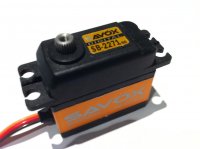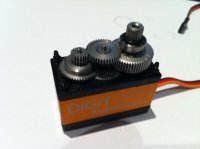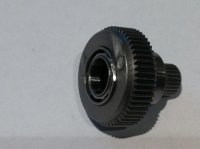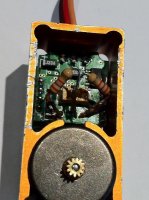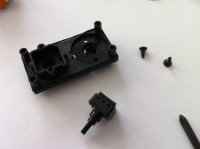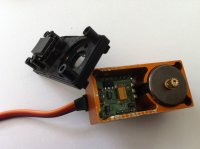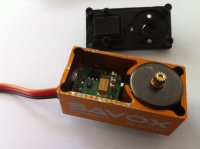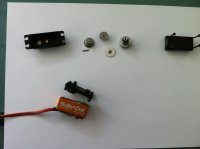Hokeypokey
Member
Hey guys,
I am currently building a camera stabilization system for an university project. The goal is to automatically align the camera (Go Pro Hero 3) with the horizon. I am using the hoverfly gimbal system as controlling unit. The last thing that's still missing is a very fast actuator for the camera rotation, that's strong enough to rotate the camera with its unbalance due to the camera lens not being in the center of the camera housing. I only need to rotate the camera on a single axis. I decided to go with the Savöx servos.
I want to use the SB-2272MG or SB-2271MG Servo. I have some questions before buying these and I hope you can help me out
1) Does anyone have experience with these two Savöx servos?
2) I read about the brushless servos not being able to be modified for 360° continuous rotation due to the magnetic encoder used inside the servo?
3) How much torque would you suggest for the servo to get the Go Pro Hero 2 or 3 rotated without too much of a backlash? I have big rotations (approx. 60°, that need to be realigned/stabilized) with moderate speed.
4) Is anyone of you using Savöx Servos? Which?
5) I think I want to use a 2:1 timing belt for rotation the camera. What are you using for gear ratios and why?
Thank you very much in advance and I hope to get some interesing answers, that help me getting my final university project working after months.
Christian
I am currently building a camera stabilization system for an university project. The goal is to automatically align the camera (Go Pro Hero 3) with the horizon. I am using the hoverfly gimbal system as controlling unit. The last thing that's still missing is a very fast actuator for the camera rotation, that's strong enough to rotate the camera with its unbalance due to the camera lens not being in the center of the camera housing. I only need to rotate the camera on a single axis. I decided to go with the Savöx servos.
I want to use the SB-2272MG or SB-2271MG Servo. I have some questions before buying these and I hope you can help me out
1) Does anyone have experience with these two Savöx servos?
2) I read about the brushless servos not being able to be modified for 360° continuous rotation due to the magnetic encoder used inside the servo?
As far as I can see, the hoverfly gimbal only has two pins for the servo connectors, that are for controlling the servo-motor. Do I really need to care about the potentiometer / encoder?jes1111: The new Savox brushless servos (including the 2271 you linked to) can't be modified for 360º rotation. Like the Hitec 7990, they use a magnetic encoder - a magnet on the bottom of the output shaft sits directly above the encoder chip on the PCB. Besides, the backlash in the gearhead exceeds the resolution of the encoder, making this type of servo very "nervous" for this application.
3) How much torque would you suggest for the servo to get the Go Pro Hero 2 or 3 rotated without too much of a backlash? I have big rotations (approx. 60°, that need to be realigned/stabilized) with moderate speed.
4) Is anyone of you using Savöx Servos? Which?
5) I think I want to use a 2:1 timing belt for rotation the camera. What are you using for gear ratios and why?
Thank you very much in advance and I hope to get some interesing answers, that help me getting my final university project working after months.
Christian

